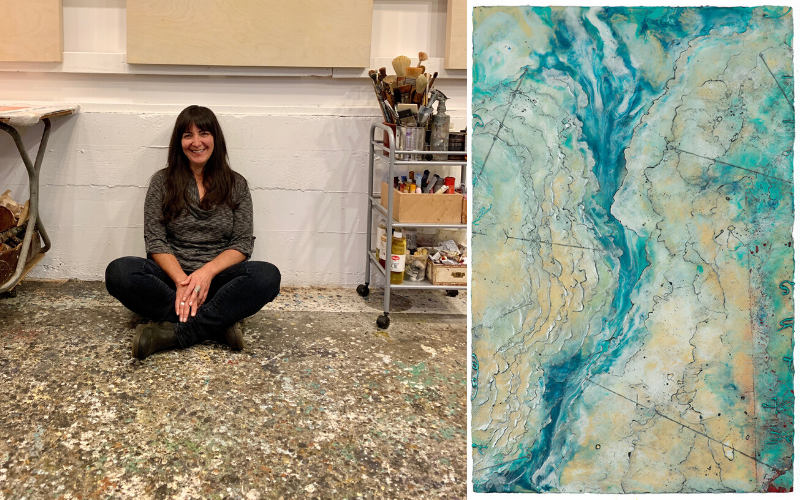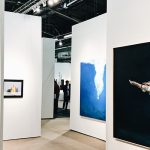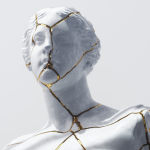Wagner spoke to us about everything, from her early days as an artist to how she managed her business. Elise’s art, philosophy, and personal practice intersect with her business mentality: Elise Wagner, artist, and painter.
Wagner is an exploratory and idea-driven painter, printmaker, teacher, and printer.
She moved to the Northwest as a child and loved the geologic history. She then studied painting at Portland State University to earn a Bachelor of Science.
Wagner was a 2015 Pollock-Krasner Foundation recipient and has been invited by institutions across the U.S., Canada, and Mexico to share her unique encaustic collagraph technique. This printmaking technique combines encaustic painting and collagraph printmaking.
Throughout her art career, Wagner cultivated and nurtured her passions: painting, art history and printmaking, geology, physics, and satellite photography.
Wagner spoke to us about everything, from her early days as an artist to how she managed her business. Elise’s art, philosophy, and personal practice intersect with her business mentality.
You invented the Encaustic Collagraph. Please tell us more.
Encaustic painting is an ancient medium that combines beeswax and resin. I can create layers and depth with the medium, which allows me to make imaginary geologic terrains. This aligns with my love for satellite, cartography, and aerial photography.
My process requires a lot of planning and forethought. I mix my colors often and have to have panels ready because encaustic is on a hard surface.
Combining oil painting with working with the Encaustic medium is what I do. The Encaustic Collagraph combines the techniques of encaustic paint and collagraph printmaking. Also, I’m a printmaker!
Every approach I take to my work requires organization and meticulousness. My business practice influences my studio practice. My studio and business philosophy is, to be honest, keep working, be true to myself, identify and seize opportunities, and continue planting seeds for future ones.
What was the first time you realized (or decided) that you were an artist?
As a child, I remember drawing and painting all the time. When I was 15, I knew I wanted to be an artist. In high school, I was training to be a professional dancer. However, I was involved in a car accident that broke eight bones and injured my knees. It was not a dance career.
My gym class was canceled for high school. So my art teacher, a recent Cooper Union graduate, added a two-hour studio class on Fridays to accommodate me and some other students. We set up a darkroom in NYC to draw and develop our drawings. It was a fantastic experience. It opened up a whole new world for me. My teacher encouraged me to enter competitions, some of which I won. He encouraged me to read Art in America and to visit the museums and galleries in New York. I did.
What inspires your art?
Living in the beautiful Pacific Northwest as a transplant from Jersey City (New Jersey), I find inspiration in the natural world and geology. My work is inspired by the sky and cloud formations.
The latest scientific discoveries, particularly astronomy, physics, and the celestial, piqued my curiosity. These elements are incorporated into my work to inspire beauty, stimulate thought, and encourage a sense of wonder.
Are there any tips you would give emerging artists or people who enjoy creating art but have yet to become artists?
As with many artists, I’ve had to adapt to the changing art world. It takes some perseverance at times. I recommend that you love what you do and develop your social media skills to help you attract the people most interested in the art you make.
Although I was able to quit my job after building my sales business and a solid track record, I couldn’t do it without my teaching business. It’s a giant leap, so ensure you have the correct revenue streams and the resources to continue. It’s a constant hustle.
I live practically. I keep my expenses and debts down to ensure that I always have money to invest in my business.
Begin to find your friends, surround yourself with like-minded people, and participate in professional development groups or resources for artists in your local area. I was introduced to Artwork Archives as an Art Next Level group member. This is an excellent resource for artists at all stages of their careers.
Stay attached to your career and art goals. Keep your eyes open. As your art’s purpose and meaning change, you can continue to learn and grow.
It takes a lot of organization and meticulousness to set the stage for my work, whether encaustic painting or printmaking. My business practice influences my studio practice. My studio and business philosophy is to keep working, be aware of the changing world around us literally and metaphorically, identify and seize opportunities, and remain open to my creative side.
Artwork Archive is an art management software that can help you improve your practice.
Artwork Archive has given me a new way to organize my inventory. I no longer have to spend as much time creating reports or inventory sheets. This allows me to spend more time in my studio and less time at the computer.
I am able to organize timelines and keep track of deadlines. Artwork Archive’s calendar and reminders keep me on track.
It’s great to list the exhibitions and galleries where certain pieces are located with the Locations feature. It is also a great way to see my studio inventory and the inventory at different galleries. It allows me to see the current value of my artwork at each gallery and my income from each.



